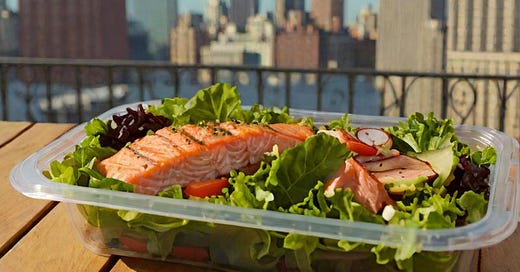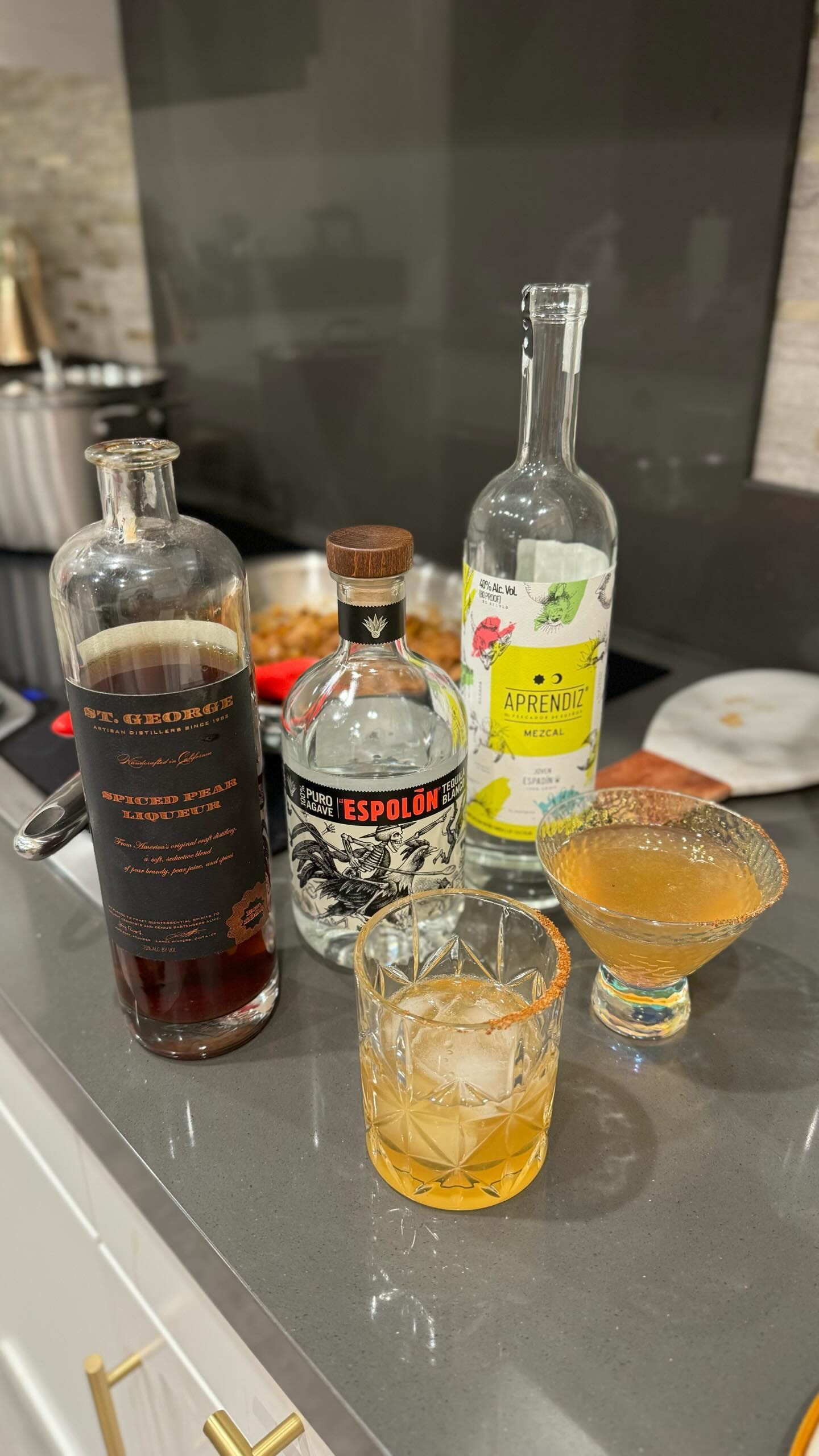Don't Sell Your Product, Make It Easy to Buy
My answer to people who have trouble getting buy in for Zero-Click Content
“I’m on board with optimizing for impressions on social media. But how do I get leadership to agree with me when all they want to do is sell sell sell?”
As marketers, we’re responsible for growing the business. So your sales team or your CEO pushes back on your organic content strategy: “Yes, you can post your cute little posts. But we’ve got to track ROI! We’ve got to move product! We’ve got to make money!”
What I want to say: “Bruh, I work in marketing. It’s my job to make you look good. it’s your job to sell the product.”
But that’s not very professional.
Here’s what I’d advise you to say instead:
You’re right. We do need to track our return on investment. Ultimately, we both want to grow the business. But we can’t do that through content or marketing alone. I really want to make sure that our channels are working hard for us — that everything we’re doing makes it easy for people to buy — and that I’m enabling you to do your job well.
In order to create those sales opportunities, we have to make sure our content gets seen. For social media, this means optimizing our content for impressions. Unfortunately, this means we’re beholden to their algorithms, and playing their game is a necessary evil. That being said, here’s how I propose we move forward:
We focus on making sure our content gets seen. This means publishing native-to-platform content. This could come in the form of a text-only post, embedded images, or the video uploaded directly into the platform. Here, we can easily track impressions as well as likes, comments and shares. We do several posts like this in a row to accrue algorithmic capital.
We “spend” that algorithmic capital on occasional posts with links. Every now and then — say, after five native-to-platform posts — we’ll publish a post that has a call-to-action. Maybe it’s to get blog clicks, newsletter signups, booked demos, or product purchases. I don’t expect this will always result in tons of demos booked, but doing so reminds our audience what we do and what we sell. It makes it easy for them to take an action if it’s the right point in their buying journey. I am very open to experimenting with ways to make sure our links get seen and clicked, and this will be a fluid, ongoing process.
We reassess our efforts in six weeks. We need to build momentum and see enough interactions in order to yield meaningful results. It’s possible we can test this faster by putting some ads behind our efforts (because that could result in increased traffic and thus, more results to look at), but at least this time frame will give us the opportunity to see how our audience is organically responding to our content.
In the meantime, I’m going to make you a lot of sales-enablement content. If nothing else, I want my team to strive for operational sustainability. I’ll make sure the money we’re spending goes a long way. We’re going to repurpose everything into another format. A blog post will become several social media posts, case studies will be bound into booklets and printed for your next roadshow, customer testimonials will be designed into carousels for LinkedIn, etc. etc. This gives us the opportunity to test different mediums and distribution channels for our content. For instance, we know our case studies aren’t an SEO play. But it doesn’t mean we shouldn’t publish them on the blog. They’re proof points for the buyer’s journey, they nudge people to buy, and they’re a content type that directly helps you do your job well.
If you prefer we take this offline, happy to grab a time on your calendar so we can discuss over lunch.
Be sure to end with that “take this offline” cliché so they know you mean business. And be sure to get them to take you to lunch because the sales team has a bigger networking budget than you do and you deserve to expense that $18 salad.
I’m only half-kidding about the “take this offline” bit. It is a cliché. But sometimes I say it too. 😅
🎁 5 Super Thoughtful Stocking Stuffers for $5-40
On that note of “making it easy for people to buy,” and since it’s the holiday season, here are my random thoughtful recommendations for stocking stuffers. All of these items are things I’ve either bought for myself or for other people. (And for food-related items, refer to our annual food and drink gift guide on the SparkToro blog!)
💐 A DIY flower kit: If you know someone who loves flower arranging, refresh their flower kit! Buy them some new, sharp pruning shears (about $5), a thorn stripper (about $11), and craft paper (about $10).
🎨 A seasonal crafting project (for them or their kids): There’s always an upcoming holiday. Give your loved one a gift they can use to decorate their fridge or that they can use in other gifts to people. The next big holiday coming up is Valentine’s Day. Consider this heart stickers kit (about $13) that they can give to friends as well. This will score you extra brownie points with parents who are always looking for activities for their little ones.
💄 Makeup stick for eyes, lips and cheeks: Good for the makeup girlies and the non-makeup girlies. Only about $5, this e.l.f. multistick is a fun and versatile way to add a pop of color to one’s makeup routine. If they don’t like it, at least you only spent $5.
🥤 A straw tumbler for the easily influenced: Oh, lighten up. I’m easily influenced too. The Simple Modern tumbler ($30) is better than the actual Stanley cup because it’s cheaper and leak resistant. Some people have told me it’s also better quality than the Stanley cup but I did not test both tumblers because I do not have time for that.
📱 MagSafe car mount charger: This is kind of a boring purchase… which is exactly what makes it a great gift. It’s practical and you know they can use it. An act of service. I have this ESR car mount (about $35) which properly holds and charges my phone while I drive, making it easy for me to glance at driving directions.
🎧 My Latest Podcasts & Webinars
If you want to see what I’ve been up to and where you can find me next.
The Bootstrapped Founder podcast: I joined Arvid Kahl’s show to talk about content, marketing, audience growth, what we’re up to at SparkToro, and how I invented the newsletter. (One of these is a joke.) You can listen here, or watch on YouTube to see my ugly mug.
Content Marketing Institute’s Trends for 2024: This week, I gave my first presentation since maternity leave. I gave a refreshed talk on my zero-click content strategy, and did some outside-looking-in teardowns of successful content at other brands. Register here for the on-demand video.
🚨 Upcoming: How to do big-budget content marketing: At the next SparkToro Office Hours, I’ll be joined by our friends at HubSpot for Startups, Ron Dawson and Alex Vo, to talk about what it takes to create “big” content marketing. They’ve produced a Chef’s Table-style short film about Rand Fishkin and SparkToro, and we’ll take you behind the scenes. We’ll talk about getting executive buy-in for a project of this scale, the concept process, choosing the right creative partner, and more. Plus, if you sign up, you’ll get free early access to this short film. Register here for the December 12 webinar.
Keep an eye out for more appearances in the new year! In January, I’ll be giving a talk at Marketing Profs. I’ll share the registration link when I can.
🥃 Old Money Cocktail
I have two kids now and not a lot of time for cooking. Lately I’m eating a lot of Thistle bowls (shameless plug with my referral link) and whipping up homemade cocktails. This is my new favorite drink and it came from anatomyofadrink on Threads. It tastes like a smoky holiday margarita.
3/4 oz mezcal
3/4 oz tequila reposado
3/4 oz St. George spiced pear liqueur
3/4 oz fresh lemon juice (from about 1/2 lemon)
3/4 oz honey syrup (or agave)
Build ingredients in a shaker with ice. Shake. Strain over rocks and serve with a pear slice garnish, and/or in a glass with a Tajin rim.






WOOHOO THE MENU IS BACK